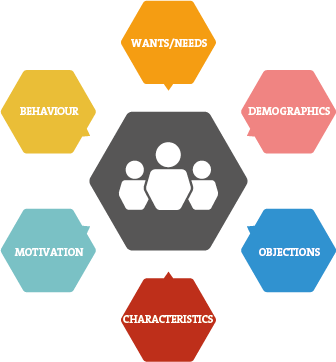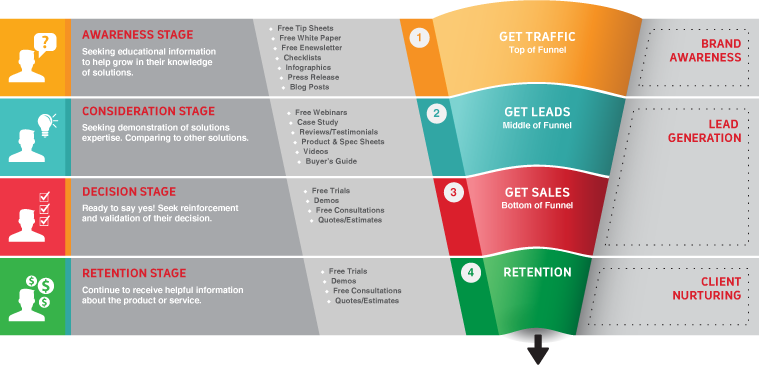How To Create a Kick Ass Content Strategy

High value content is at the heart of any successful social media marketing campaign. To generate a constant stream of qualified leads online, your content has to be frequent, consistent and engaging. This can make it hard for small-to-medium sized companies to keep their content refreshed and relevant to their audience.
To ensure on-going content marketing success, your business needs a well-crafted content maketing strategy. And so, the all-important question is: How do you create a Kick-Ass Content Stratetgy?
The steps outlined below will help you craft an enduring one that’ll help you brand, postion and promote yourself online.
Step 1: Research, Research, and yes, more Research!
The first step to any successful content marketing strategy is absolutely critical. Without this step, all of your other activities are reduced to mere guesswork – never a great recipe for success. In order to maximise the potential of your content, we suggest you pay particular attention to these three key areas of research:
- Research Your Customers
- Research Your Competitors
- Research Your Company
1) Understand Your Customers
In order to succeed, your content must not only be relevant to your target audience, but must be capable of delivering an
emotional connection with them as well. Why? Because an emotional connection, focused on a particular hot button issue or challenge they experience, has a better chance of stopping them in their tracks and compelling them to pay attention to what you have to say.
 So, it stands to reason that you begin your content marketing project by thinking about what your ideal customer actually looks like. What are their hot buttons i.e. those problems and challenges that frustrate them every day. Push through with your research until you understand exactly what type of content your target audience frequently engages with.
So, it stands to reason that you begin your content marketing project by thinking about what your ideal customer actually looks like. What are their hot buttons i.e. those problems and challenges that frustrate them every day. Push through with your research until you understand exactly what type of content your target audience frequently engages with.
There are a wealth of ways of researching your ideal customer, including conducting surveys, talking to friends and family, studying who your direct competitors are targeting, reading through online forums and more. However you choose to do it, your research needs to answer key questions about who your audience is and what their interests, challenges, questions, objections, likes and dislike are. Map out your ideal target market in detail to clear up any uncertainties and pay attention to any annomalies that crop up.
Once you have established who your target audience is, it is essential to keep your content relevant to them, otherwise it will bring in less appropriate leads that have a lower chance of converting. Avoid trying to entice everyone, no matter who they are, as this will only dilute your message. Instead, try creating a ‘reader persona’ — write a profile for your ideal customer and create content directly aimed at them.
Analyse the Buying Cycle
The buying cycle is something you must understand for a content marketing strategy to be truly effective. Customers at different stages of the buying cycle respond to different kinds of content, so it is important to make sure that every stage is properly addressed.

The buying cycle can vary between companies and industries, but a common framework for the customer’s journey is as follows:
- Becoming Aware of your company, products and services
- Researching & Considering how it can help with the problems they face
- Purchasing & Experiencing your offer, product or service
- Usage and Aftercare, their post-purchase experience where many businesses strive to retain their hard-earned customers
- Advocates: through superior customer services, your loyal customers become your army of steadfast advocates.
The great thing about the buying cycle is that each ‘phase’ calls for a different type of content. However nuanced your message is, these phases give you innumerable opportunities to address the specific information needs of a propect. Try segmenting your audience by where they are on the buying cycle and creating content specifically targeted at them.
2) Understand Your Competitors
Context is everything. Your business is not a stand-alone entity and rest assured, you are being viewd by your audience in relation to your competition. For this reason, it is of paramount importance that you understand where you sit in your chosen playng field. Spend some time doing careful online research about competitors. How are they performing? What type of content are they sharing and how well do they brand, postion and promote themselves online? Are their audiences engaging with them? And if so, what sort of content engages them the most?
 What you really want to understand is how high your competitors are setting the bar. To compare favourably and stand out in your audiences’ mind, you must ensure your content offering is of the highest possible standard. And you can only determine this if you’ve spent a concerted effort examining what your competitors have to offer.
What you really want to understand is how high your competitors are setting the bar. To compare favourably and stand out in your audiences’ mind, you must ensure your content offering is of the highest possible standard. And you can only determine this if you’ve spent a concerted effort examining what your competitors have to offer.
Beyond your immediate competitors, you should also spend some time seeking out key industry players, both within and outside your industry. If you’re concentrating on a particular social media channel, try to identify brands considered global leaders or experts on that channel, irrespective of the product or industry. Examine not just how many followers and likes they have, but try to understand what makes them so successful, i.e. their levels of engagement, specific post types, frequestency of posts, use of various media types, creative style, tone of voice, etc.
During this exercise, focus on what’s relevant for your brand. What lessons can you learn? What tactics can you borrow? What do you think would resonate the most with your own audience? Be inspired by what you find and let your creative juices start to flow.
3) Be Brave, Audit your own Company
The next logical step is to put your business under the microscope. Bearing in mind your recent findings regarding your competitors, now it’s time to analyse exactly how and where your company sits in the industry and how it compares to what’s out there.
At this point, we would suggest that you get really familiar with all of the marketing collateral that you’ve previously created. Make an inventory of absolutely everything and analyse its strengths and sheer quality. As your company matures and you learn more about your customers, so too will your core marketing message evolve, as will the way you talk about the services you offer.
So, set to one side all of those communications that didn’t quite work, or that you’ve since moved away from. And bring forward all of those messages that are proving more successful because they resonate well with the people you’re trying to connect with.
At this stage, you may choose to do some fine-tuning. That’s completely fine, in fact, utterly appropriate. Start wordsmithing until you have separate core marketing messages that postion your company in the best possible light and speak directly to each segment of your target audience.
Don’t forget, it is essential that your messages speak to your target audience on an emotional level. Think about the single biggest benefit you offer to your customers that your competitors do not. Focus on how unique you are in the market and the compelling value you offer. What you’re trying to create is a marketing message so engaging, so compelling, that your audience wants to know more about what you do. You can only do this if you connect with them on an emotional level.

Step 2: Build Your Content Marketing Strategy
By now, you should have an exceptionally strong foundation upon which to build your stellar content marketing strategy. You know where you are in relation to your customers, your competitors and your own core marketing capabilitites. Now it’s time to get down to the real work.
Ready to Commence Content Creation
Your content strategy needs to map out the type of content you are going to publish: blog posts — (humorous or informative?), guest blogs vs industry leaders, white-papers, personal insights … the list is endless.
Consider the types of media that will most effectively promote your business. Perhaps you are in the technology industry and your audience would grow respect and admiration for a business that provides comprehensive, how-to manuals to solve certain types of challenges. On the other hand, an arts based business might consider utilising photographs and videos to entice their audience.
Decide on which social media channels will be most effective for the types of audiences your trying to attract. If content marketing were a battle, your social media channels would form the front line. So dig those trenches, build solid foundations, and be prepared for any and all activity.
With so much choice as to which channels to utilise, take care not to sacrifice quality for quantity. Spreading yourself too thin and posting poor content across every channel does more harm than good. Better to focus on one or two core channels, and post frequent, high-quality content than try to post replicated, non-targeted content across multilple non-relevant channels.

Set a Schedule & Execute
A clear, regular content schedule, planned in advance, is essential for keeping your content strategy running at peak performance. Use a spreadsheet or calendar application to maintain a clear schedule for content publication, and aim to keep this three months ahead of the current date as far as possible (though falling behind this target now and again is virtually unavoidable).
In creating a schedule, start with your marketing goals and the times at which you expect your audience to be most active, and design the schedule around that. Make sure it includes specific tasks, such as publishing blogs or posting on social media, as well as specific times and dates.
Also, you’ll need to be clear about the requirement that each piece of content will need clearly defined SEO keywords, calls-to-action, or conversion goals. It’s a good idea to have these thought-through and defined before you start creating the content.
One other essential point of note. Make sure you schedule regular review points during which you evaluate the effeciveness and success of your content marketing campaigns. If something isn’t working, change it! A genius content strategy should evolve organically based on the demands of your market and should never be set in stone. Keep track of any alterations you make in a log of some sort; this is valuable information and the key to engagement with your audience – yours to use in any future projects and campaigns.
 We hope you’ve enjoyed our guide to developing a kick-ass content strategy. These steps are exactly the same ones we take internally when creating a content marketing strategy for our clients.
We hope you’ve enjoyed our guide to developing a kick-ass content strategy. These steps are exactly the same ones we take internally when creating a content marketing strategy for our clients.
At Digital Gold HQ, our content strategists work hard to understand our clients’ needs and ambitions. We create deep, watertight strategies that deliver real and consistent results.
For help turning your content strategy into a powerful generator of leads and conversions, just give us a call.



